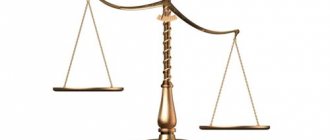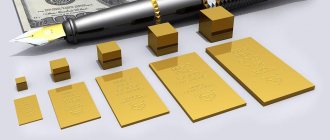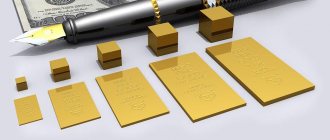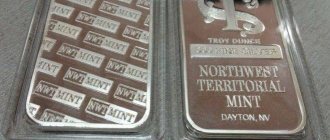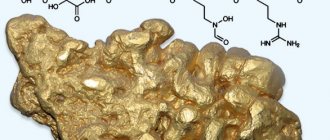"Fluid ounces" redirects here. For the group, see Fluid ounces.
| Fluid ounce | |
| Example of a 2 fl oz shot glass in British Imperial fl oz | |
| general information | |
| System of units | Imperial units, US customary units |
| Unit | Volume |
| Symbol | fluid ounce |
| Transformations (Imperial) | |
| 1 imp. Fluid ounce in... | … equals … |
| SI units | 28.41306 ml |
| US customary units | 0.9607599 US fl oz |
| Conversions (US) | |
| 1 US fl oz per... | … equals … |
| SI units | 29.5735295625 ml |
| Imperial units | 1.040843 imp fl oz |
| Look up fluid ounce in Wiktionary, the free dictionary. |
Fluid ounces
(abbreviated
fl. oz
.,
fl. Ounce.
or
oz. fl.
, Old forms ℥, fl℥, f℥, ƒ℥) is a unit of volume (also called power) typically used to measure liquids. Various definitions have been used throughout history, but only two are still in common use: in the British Empire as well as the United States, fluid ounce is generally accepted.
Imperial fluid ounce
is 1/20 of an imperial pint, 1/160 of an imperial gallon or approximately 28.41 ml.
US fluid ounces
is 1/16 of a US fluid pint and 1/128 of a US fluid gallon or approximately 29.57 ml, making it about 4.08% larger than an imperial fluid ounce.
The fluid ounce is distinguished from the ounce as a unit of weight or mass, although it is sometimes called simply "ounce" when the context makes the meaning clear, such as bottle ounces.
History[edit]
A fluid ounce was originally the volume occupied by one ounce of a substance, such as wine (in England) or water (in Scotland). The ounce in question also varied depending on the liquid measurement system, such as that used for wine and ale.
Various ounces were used over the centuries, including the Tower ounce, troy ounce, avoirdupois ounce and ounces used in international trade, such as the Parisian troy, a situation further complicated by the medieval practice of "surcharges", where a unit of measurement was not necessarily equal to the sum of its parts. For example, a bag of wool weighing 364 lb (165 kg) had 14 lb (6.4 kg) for the weight of the bag and other packing materials. [1]
In 1824, the British Parliament defined the imperial gallon as the volume of ten pounds of water at standard temperature. [2] The gallon was divided into four quarts, the liter into two pints, the pint into four gills, and the gill into five ounces; thus there were 160 imperial fl oz in a gallon.
The mass of a fluid ounce of water was thus approximately one avoirdupois ounce (28.35 g), a ratio that remains approximately valid today, although the definition of the imperial gallon has been slightly modified to be 4.54609 liters (thus the British fluid an ounce is exactly 28.4130625 ml).
The US fluid ounce is based on the US gallon, which in turn is based on the 231 cubic inch wine gallon that was used in the United Kingdom until 1824. With the adoption of the international inch, the US fluid ounce became 1 ⁄ 128 gallon × 231 in 3 × (2 .54 cm/in) 3 = 29.5735295625 ml exactly, or about 4% more than imperial units.
Fluid ounce
The inscription oz is used abroad as a short designation for ounce. You can meet her if you make purchases, for example, at online auctions. Any liquid goods will be measured in ounces: eau de toilette, perfume, aromatic oils, rare liquid spices and more. Naturally, we are talking about purchasing goods from America and Great Britain, as well as countries that are members of the Commonwealth of Nations, for example, Australia and Canada. It is worth noting that when purchasing goods from the USA, a simplified measure is used; an ounce in this case will be equal to 30 milliliters.
Converting ounces to milliliters may also be necessary when trying to use recipes for various dishes. If you come across a cookbook from the UK or Australia, you will know how to convert ounces to milliliters, for example 10 ounces will contain 300 milliliters. Liquid measuring cups are sometimes labeled with the ounce and its fractions. Very often you can find this designation of a volume measure on children's dishes, for example, feeding bottles. A standard 100 ml serving will equate to just over three ounces. This is possible because such a product is produced mainly for the whole world, but milliliters can also be seen on them at the same time.
Therefore, there should be no problem determining the number of milliliters in a fluid ounce. The main thing to remember is that there are several varieties, which can play a significant role when purchasing expensive goods. Interestingly, the United States has already introduced the metric system at the legislative level, but Americans are so accustomed to the existing one that it has not yet taken root.
Definitions and equivalents[edit]
Imperial fluid ounce
| 1 imperial fl oz | = | 1 / 160 | imperial gallon |
| = | 1 / 40 | imperial quart | |
| = | 1 / 20 | imperial pint | |
| = | 1 / 10 | imperial cup | |
| = | 1 / 5 | imperial gill | |
| = | 8 | imperial fluid dramas | |
| = | 28,4130625 | milliliters [3] | |
| ≈ | 1,733871455 | cubic inches | |
| ≈ | 0,960759940 | US fluid ounces | |
| ≈ | volume 1 every ounce of water [2] | ||
US regular fluid ounce
| 1 US fl oz | = | 1 / 128 | US Gallon |
| = | 1 / 32 | US quart | |
| = | 1 / 16 | US pint | |
| = | 1 / 8 | US Cup | |
| = | 1 / 4 | US Gills | |
| = | 2 | US tablespoons | |
| = | 6 | US teaspoons | |
| = | 8 | Liquid Dramas USA | |
| = | 1,8046875 | cubic inches [4] | |
| = | 29,5735295625 | milliliters | |
| ≈ | 1.040842731 | imperial fluid ounces |
US Food Labeling Fluid Ounce
For serving sizes listed on US food labels, 21 CFR §101.9(b) requires the use of "general household measures" and 21 CFR §101.9(b)(5)(viii) specifies "regular home" fluid ounce. like exactly 30 milliliters. [5]
| 30 milliliters | ≈ | 1,055852392 | imperial fluid ounces [3] |
| ≈ | 1.014420681 | US regular fluid ounces [4] | |
| ≈ | 1,830712323 | cubic inches |
What is Fl. Oz and why do they write like that?
In countries where the basic unit of weight is the pound, it is customary to use the fluid ounce to indicate volume. In English, this measure sounds like “fluid ounce”, and is abbreviated as Fl. Oz. Translated into the milliliters we are used to, 1 Fl. Oz is approximately 28 ml.
In the United States, pounds and ounces are also used. Only in this country 1 Fl. Oz is approximately 30 ml and is used more in the food industry, but it is also possible to use it to indicate the volume of eau de toilette or perfume. This is how it happened historically; there is no rational explanation for it.
Links and notes[edit]
- Connor, R.D.; Simpson, Allen David Cumming; Morrison-Lowe, AD; National Museums Scotland (2004). Weights and Measures in Scotland: A European Perspective. NMS. item 153. ISBN. 978-1-901663-88-4. Retrieved September 21, 2012.
- ^ab The imperial gallon was originally defined as the volume occupied by ten avoirdupois pounds (4.54 kg) of distilled water suspended in the air using brass weights with a barometer set at 30 inches of mercury (102 kPa) at 62 °F. (16.7°C).
- ^ ab "Units of Measurement Regulations 1995 (Appendix)". September 20, 2000. Retrieved April 18, 2006.
- ^ ab One US gallon is defined as 231 cubic inches.
- "21 CFR §101.9". Retrieved May 31, 2022.
Ounces to Grams Calculator
You convert ounces to grams
Calculator - Weight and Mass - Ounces to Grams
How many grams in ounces - convert oz to gr
1 Ounce (oz) = 28.3 Grams (g)
Ounces An ounce (abbreviation: "oz") is a unit of mass that has several definitions. Often an ounce is equal to 28 grams. Its size may vary in different systems. Today, the most widely used international ounces are avoirdupois, equal to 28.3495231 grams, and troy ounces, equal to 31.1034768 grams.
Grams A gram (symbol: “g”) is a metric unit of mass. One gram is equal to 1/1000 of a kilogram in SI or 1E3 kg. Today, the gram is a widely used unit of measurement for solids in food preparation and in grocery stores around the world.
Conversion of units of Weight and Mass
Convert from
Convert to
oz
=
G
| Basic units of weight | |
| Carat | car |
| Gram | gr |
| Kilogram | kg |
| Milligram | mg |
| Ounce | oz |
| Lb | lb |
| Ton | T |
| Other units of mass | |
| Assarion | assarion |
| Atomic mass unit (Dalton) | A. eat. |
| Attogram | ag |
| Bekah | |
| Centigram | cg |
| Dalton | |
| Dg | dg |
| Dekagram | dag |
| Denarius | denarius |
| Didrachm | didrachma |
| Drachma | drachma |
| Dina | dyn |
| Exagram | Eg |
| Femtogram | fg |
| Hera | gerah |
| Gigagram | Gg |
| Grain | gr |
| Hectogram | hg |
| Hundredweight | cwt |
| Hundredweight(UK) | cwt |
| Kip | |
| Mite | lepton |
| Megagram | Mg |
| Microgram | µg |
| Mine | mina |
| Mina(Biblical Hebrew) | mina |
| Nanogram | ng |
| Pennyweight | pwt |
| Petagram | Pg |
| Picagram | pg |
| Poundal | pdl |
| Quadrant | quadrans |
| Quarter | |
| Quarter(UK) | quarter |
| Quintal | quint. |
| Scruple | scr |
| Shekel | shekel |
| Slug | |
| Stone | st |
| Stone(UK) | st |
| Talent(Greek) | |
| Talent(Hebrew) | |
| Teragram | Tg |
| Tetradrachm | tetradrachma |
| Ton | |
| English ton | |
| Troy ounce | |
| Pharmacist's pound | |
| Basic units of weight | |
| Carat | car |
| Gram | gr |
| Kilogram | kg |
| Milligram | mg |
| Ounce | oz |
| Lb | lb |
| Ton | T |
| Other units of mass | |
| Assarion | assarion |
| Atomic mass unit (Dalton) | A. eat. |
| Attogram | ag |
| Bekah | |
| Centigram | cg |
| Dalton | |
| Dg | dg |
| Dekagram | dag |
| Denarius | denarius |
| Didrachm | didrachma |
| Drachma | drachma |
| Dina | dyn |
| Exagram | Eg |
| Femtogram | fg |
| Hera | gerah |
| Gigagram | Gg |
| Grain | gr |
| Hectogram | hg |
| Hundredweight | cwt |
| Hundredweight(UK) | cwt |
| Kip | |
| Mite | lepton |
| Megagram | Mg |
| Microgram | µg |
| Mine | mina |
| Mina(Biblical Hebrew) | mina |
| Nanogram | ng |
| Pennyweight | pwt |
| Petagram | Pg |
| Picagram | pg |
| Poundal | pdl |
| Quadrant | quadrans |
| Quarter | |
| Quarter(UK) | quarter |
| Quintal | quint. |
| Scruple | scr |
| Shekel | shekel |
| Slug | |
| Stone | st |
| Stone(UK) | st |
| Talent(Greek) | |
| Talent(Hebrew) | |
| Teragram | Tg |
| Tetradrachm | tetradrachma |
| Ton | |
| English ton | |
| Troy ounce | |
| Pharmacist's pound | |
Conversion result:
Other popular mass and weight calculators
- Carat to Gram
- Carat to Kilogram
- Carat to Milligram
- Carats to Ounces
- Carat to Pound
- Carats to Tons
- Gram to Carat
- Gram to Kilogram
- Gram to Milligram
- Gram to Ounce
- Gram to Pound
- Grams to Tons
- Kilogram to Carats
- Kilograms to Grams
- Kilogram to Milligram
- Kilograms to Ounces
- Kilogram to Pounds
- Kilogram to Tons
- Milligram to Carat
- Milligram to Gram
- Milligram to Kilogram
- Milligram to Ounce
- Milligrams to Pounds
- Milligrams to Tons
- Ounce to Carats
- Ounce to Gram
- Ounce to Kilogram
- Ounce to Milligram
- Ounce to Pound
- Ounce to Ton
- Pound to Carat
- Pound to Gram
- Pound to Kilogram
- Pound to Milligram
- Pound to Ounce
- Pound to Tons
- Ton to Grams
- Ton to Kilos
- Ton to Milligrams
- Ton to Ounces
- Ton to Pounds
Features of measuring cups
This cookware can be made of food-grade plastic, glass or stainless steel. The first option is the most common, since glass is a fragile and relatively expensive material, and easily appearing dents on stainless steel lead to a loss of measurement accuracy.
The second feature of the measuring cup is the scale. Usually it allows you to measure volume in milliliters or weight in grams, but sometimes manufacturers can focus not only on international standards, but also on local ones. In this case, the measuring cup either pleases with numerous scales, in which it is difficult not to get lost, or with just one, but with mysterious ounces and pints. These are the ones that need additional explanation.
@aliexpress.com
Varieties
In addition to the regular one, several other ounces are currently in use. These can be measurements of different quantities. This unit is used not only to clarify weight. It is used in the following cases:
- A troy ounce, weighing about 31.1 grams, is used to determine the mass of precious metals such as gold, silver, platinum, palladium, rhodium, etc.
- Ounce-force is a measure of weight, that is, mass.
- Fluid ounce is a measure of volume.
Historically, it was used in many industries in various fields where it was necessary to measure mass or volume.
Why is the troy ounce necessary?
While the "common" ounce plays a crucial role in determining the weight of many common household products, it is of little use to the bullion dealer or investor when discussing precious metals. In contrast, the troy ounce is an exact
a form of measurement that can be expressed in different ways. Rounded to the nearest ten millionth, it weighs 31.1034768 grams.
It also represents 1/12 of a troy pound. However, a much more common mass measurement for precious metals is the kilogram, which corresponds to 32.151 troy ounces. This is equivalent to a standard kilogram or 1000 standard grams or 2.20464 standard pounds.
The use of the troy ounce and its very specific value in terms of weight provides consistency when measuring the weight of precious metals. It has been in use since at least the Middle Ages. Even gold and silver antiques are often marked in troy ounces or fractions thereof. Measuring investment products in troy ounces is consistent with weighing rules still in use today.
So, there are many weight standards used when discussing and trading investment products. This is why it is important to have a working knowledge of each weight type and their relationship to each other. Yes, there is a lot of information, but it is necessary!
Dealing with—or investing in—investment products is not for the faint of heart. But when you deal with professionals, navigating the world of precious metals becomes much easier. They can tell you about many aspects of buying and selling silver, gold, platinum and palladium. You'll learn a variety of terms, definitions, and common vocabulary they encounter every day. These professionals can even help you become a more knowledgeable precious metals buyer and seller so you can trade and invest with more confidence.
Etymology of the name
Where does the term "ounce" come from? This name comes from the Latin uncia, a unit that was one twelfth of the Roman pound (a measure of weight).
The name was borrowed twice. Old English was first spoken as "insan" or "indsan" (a corrupted form of Latin). Then the word "ounce" began to be used in late medieval English.
The abbreviation oz came later from the related Italian word onza (now spelled oncia).
How to decipher the designation
Transcribe or translate Fl. Oz. to the usual milliliters you can use our table.
| Fl. Oz. | ml | Fl. Oz. | ml |
| 0,25 | 7,5 | 2 | 60 |
| 0,5 | 15 | 2,5 | 75 |
| 0,57 | 20 | 3,3 | 100 |
| 0,8 | 25 | 4,2 | 125 |
| 1 | 30 | 6 | 150 |
| 1,5 | 45 | 6,5 | 200 |
| 1,7 | 50 | — | — |
The table shows the value for the fluid ounce of the English metric system, the most common in perfumery. For the US fluid ounce, the milliliter values will be slightly larger.

